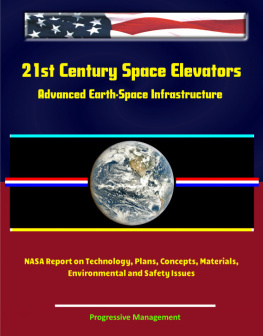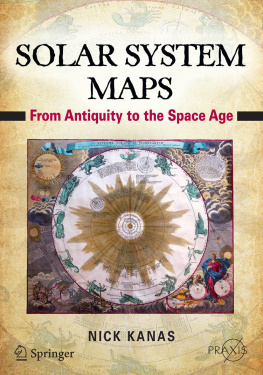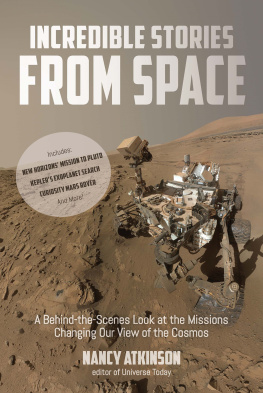
WIDE-FRAME MOSAIC OF SATURN
On July 19, 2013, nasa s Cassini spacecraft captured exquisite images of Saturn, resulting in this composite photo of 323 images taken in just over four hours. Cassini captured Saturns seven moons, its rings, and the Earth, pictured as a barely visible dot in the background of spaceall backlit by the Sun.

BLOOMING PHYTOPLANKTON
This colorful image, taken in September 2014 by the Operational Land Imager on the Landsat 8 satellite, reveals phytoplankton blooming in the Bering Sea near Alaskas Pribilof Islands. The phytoplankton, microscopic organisms that provide a fertile habitat for fish and birds, can be seen in the milky light blue and green areas of the image. Phytoplankton blooms are delicate and can be easily impacted by an ecosystems changing temperature, vitamins, minerals, and predators. The blooms in the Bering Sea increase in the springtime when ice retreats and nutrients are available near the waters surface, and they decrease in the summertime as the water warms and grazing marine life feed on the phytoplankton.
Text copyright 2015 by Chronicle Books LLC.
All rights reserved. No part of this book may be reproduced in any
form without written permission from the publisher.
constitute a continuation of the copyright page.
ISBN 978-1-4521-4605-8 (epub, mobi)
Library of Congress Cataloging-in-Publication Data
Nataraj, Nirmala.
Earth and space : photos from the archives of nasa / Nirmala Nataraj.
pages cm
Preface by Bill Nye.
Includes bibliographical references.
ISBN 978-1-4521-3435-2 (hc)
1. Outer space--Pictorial works. 2. Earth (Planet)Pictorial works. 3. Astronomical photography. I. United States. National Aeronautics and Space Administration. II. Title.
QB68.N38 2015
520dc23
2014043715
Book design by Neil Egan
Additional typesetting and layout by Liam Flanagan
Chronicle Books LLC
680 Second Street
San Francisco, CA 94107
www.chroniclebooks.com
PREFACE
by Bill Nye
E very one of us has dreamed of it the ability to fly. With the freedom of flight, we imagine vistas: mountains, rivers, forests, deserts, and the trackless sea. But what if we could not only soar above the ground? What if we could fly high beyond the Earth to view our world and the deepest reaches of the cosmos? That is what the creators of the images in this book were able to do for realnot by flying like a comic book hero, but by conceiving and creating robotic spacecraft that carry cameras to vantage points our ancestors could only have imagined in their wildest dreams.
Pictures from space are remarkable, of course. The views amaze and astonish us; the images themselves are artwork. But unlike many portraits, landscapes, or still lifes, these photographs are not the product of one artist or visionary. Instead, these images were created by a national program and are the result of the work of thousands of highly skilled engineers, artisans, and scientists who share the human need to explore and feel the joy of discovery.
Our ancestors have been watching the sky for perhaps the last hundred thousand years. But it was only in the last hundred years that we came to understand why galaxies take on distinctive shapes. It was only in the last decade that weve had roving eyes on Mars, and it was only in the last few years that weve seen the true delicate shape of the rings of Saturn. None of this would be possible without the National Aeronautics and Space Administration. nasa s recognition and respect are unmatched, and the astonishing images nasa produces for books like this are a testament to the American programs continuing cultural relevance.
As you turn the following pages of Earth and Space, I hope you appreciate the inherent beauty of each image. But I further hope that each picture and caption whets your curiosity about the science behind the astronomical phenomena. Why do stars establish these elegant patterns? Why do reflected beams of light produce these apparent colors, which we cannot see with our unaided eyes? Why did all this material arrange itself into a planet at this particular point in all that is outer space? I also hope that you take a few moments to appreciate the remarkable collective work of the engineers, artisans, and scientists who created these beautiful images. Every bit of hardwarefrom the small rocket motors used for maneuvering to the large lenses used to detect photons in the icy blackness of spacewas built by people, who thought up performance specifications, systems, and shapes to create remarkable spacecraft that can journey into the deep reaches of our galactic neighborhood and send stunning pictures back to us on Earth.
Its only from above that we can appreciate the fragile nature of the world below. Earth and Space allows us to fly, to soar high above our own planet and into deep space. How lucky we are that the images that nasa collects in space are available to us, the first generations of humans to build and fly these extraordinary spacecraft. Heres hoping that we continue to journey, explore, and discover from this day forward so that we may always be aware of the remarkable cosmos and our place within it.

NEW WINGS FOR THE HUBBLE SPACE TELESCOPE
This image, recorded by a digital camera on March 9, 2002, offers an impressive view of the Hubble Space Telescope floating above Earth and sporting four new flexible solar array wings, which were installed by space shuttle Columbias sts -109 crew. The crew gave the Hubble a much-needed hardware upgrade over the course of its ten-day mission, which included five space walks. The former solar arrays were destroyed by radiation and space debris, and the Hubbles new wings offer it 30 percent more power and the ability to endure extreme temperatures. The mission also oversaw the installation of the Advanced Camera for Surveys ( acs ), a sensitive tool with ten times the discovery power of the camera it replaced. With a wide field of view, crisp image quality, and the ability to pick up information from the visible to the far ultraviolet spectrum, the acs can generate detailed images of galactic inner regions and the objects in neighboring star systems.
INTRODUCTION
by Nirmala Nataraj
F ourteen billion years ago , just seconds after the Big Bang, the universe was merely a sac of radiant plasma made up of hot ionized hydrogen and helium gas. As the universe gradually cooled and expanded outward over time, the hydrogens electrons and protons recombined. This newly neutralized hydrogen began to absorb existing photons, and as a result, the light that had illuminated the dawn of the universe slowly faded. Four hundred thousand years after the Big Bang, the universe entered the Dark Ages, a period lasting hundreds of millions of years in which an opaque blackness reigned supreme. Had humans been around during this time, nothing in our cosmos would have been detectable to the naked eye.
Eventually, thick fogs of gas, barely lit by the infrared beams left over from the Big Bang, gathered to form galaxies. As early stars and quasars (masses of energy and light that are the brightest objects in the current universe) emerged from these gaseous galactic cradles, the energy they radiated re-ionized the hydrogen, allowing light to spread throughout the cosmos.
Next page









